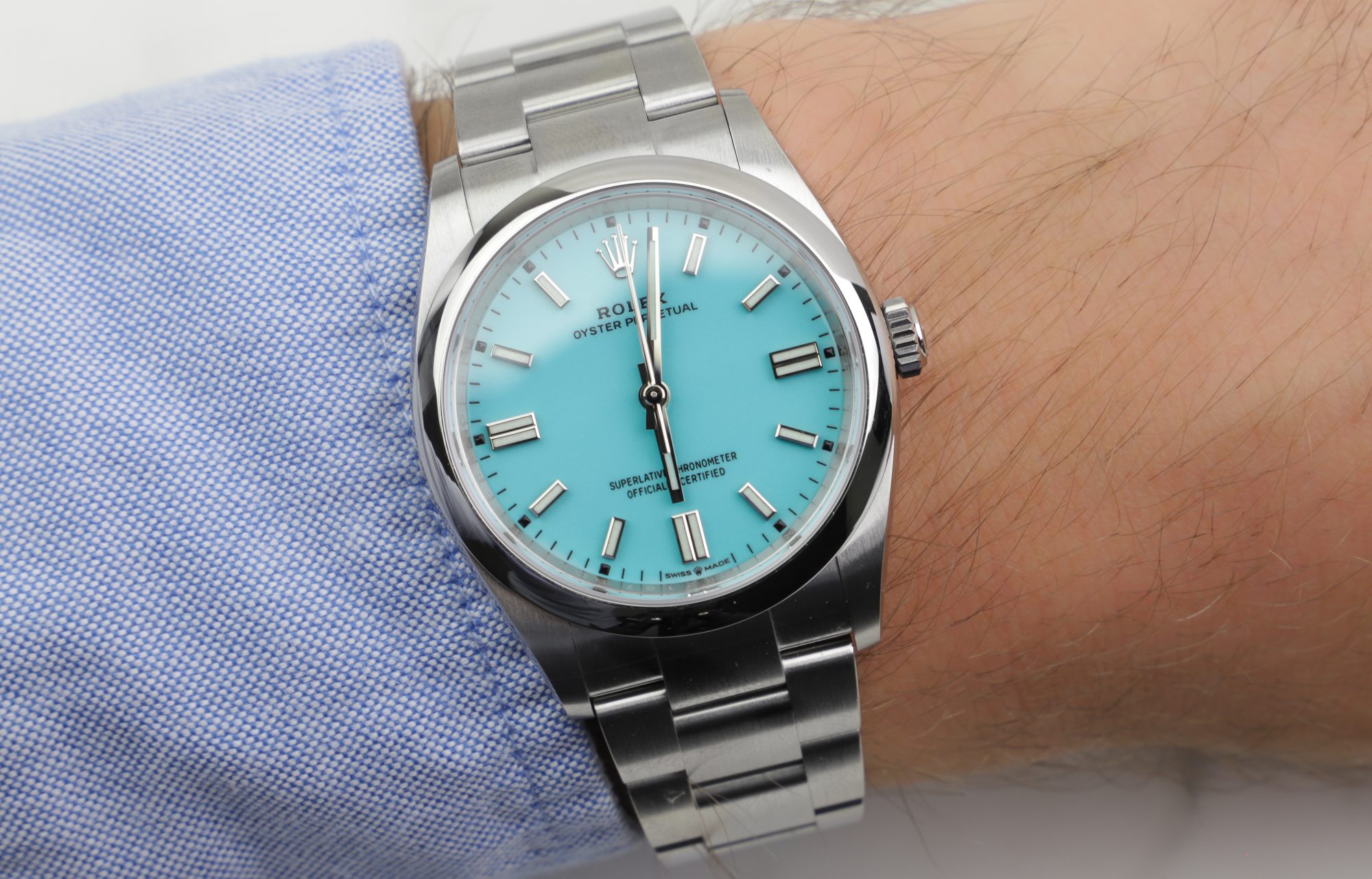
Rolex Oyster Perpetual Tiffany – Why The Hype?
In September 2020, Rolex announced its new models for the year. Everyone was eager to see what Rolex came up with for this year, and the expectations were high – considering their ordinary release date, which is usually held in April during the Basel event, was postponed due to Covid-19.
What prior to September 2020 was one of the more “boring” and not sought-after models, which also happens to be Rolex’s first entry-level watch for the Oyster Perpetual collection, rapidly became one of the most popular models. All because of their new dial configurations which were presented on the Oyster Perpetual in the sizes 31mm (reference 277200), 36mm (reference 126000), and the all-new 41mm (reference 124300).
The new colors were very eye-catching and were instantly called “Stella” dials by collectors and enthusiasts. However, amongst their newly released dial configuration, one color stood out from the rest, and from day one was to be called the “Oyster Perpetual Tiffany Dial”. The Turquoise Blue dial, as Rolex presents the color, is a bold color, and to be Rolex a very interesting choice, considering Rolex tends to be a very conservative brand.
The reason why the Turquoise Blue dial was to be called the “Tiffany dial” is because of the reminding colors of Tiffany’s logo, which actually leans more towards green than blue. However, what also has a major impact on the nickname is the fact that Rolex and Tiffany have a past collaboration together, just as Tiffanys & Co today has a collaboration with Patek Philippe watches. Read more about Rolex and Tiffany’s collaboration here.
When Did The Hype Start?
Shortly after the models were released, they were available with the Authorized Rolex retailers in-store. The Tiffany dial Oyster Perpetual, having the retail vs second-hand market value in mind, did not go for a huge premium. In September of 2020, the Oyster Perpetual 36mm reference 126000 with the Tiffany dial, was trading at €6500, whilst the retail price was around €5250. Of course, in terms of percentage, the premium for the previous, not sought-after model was huge, but in hindsight, the early days premium for the dial was slim to non, compared to today’s market.
When did the price escalate?
The subject is very hard to have a defined answer on, as the first gray-market prices in some eyes already are ridiculous prices with a €1000 markup from the retail price. But to understand when the watches really started to become popular we have to understand how the deliveries for Rolex Authorized Dealers work.
A Rolex official dealer gets, in January each year, an allocation list from Rolex stating how many pieces of each model they are going to receive throughout the year, without knowing when they will be delivered. For instance, if an Authorized Dealer is allocated 12 Daytona 116500LN each year, a safe assumption would be that a Dayonta will be delivered each month throughout the year – but it’s not certain. With this said, the store does know approximately how many pieces they will receive, just not when exactly they will be delivered. The stores also have the possibility of requesting certain pieces each month from Rolex – in addition to its yearly allocation list, in order to meet their clients’ demands of certain specific timepieces, which can result in having more pieces of a specific model delivered than the was was originally planned.
With this said, if the Oyster Perpetual 41mm, reference 124300, was planned to be delivered 21 times, there are 7 different dial configurations that can end up with the store, a safe assumption would be that out of the 21 watches, 3 dial configurations would be the Turquoise blue “Tiffany” dial, which is 1/7 of the allocated watches, making it extremely hard for the official retailers/Rolex to meet the demand for this watch with this specific dial.
As soon as something starts to get more trendy and sought after, the demand for the model and specific configuration increases, and instantly it becomes almost impossible for the store to meet the demand with the limited supply they receive.
The Rolex “Tiffany” Oyster Perpetual reference 124300 in 41mm was discontinued in 2022, meaning that it only had a production time of two years (2020-2022). This makes it one of the shortest-produced Rolex watches in modern times.





